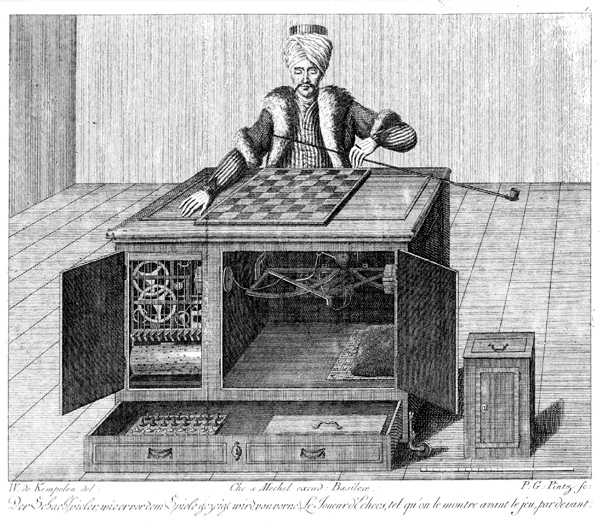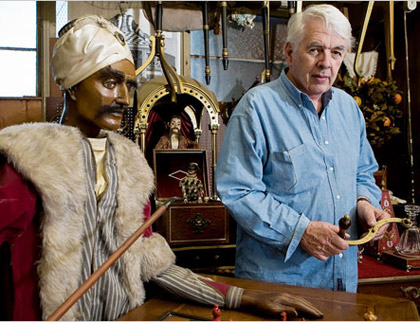
An engraving of The Turk from Karl Gottlieb von Windisch’s Inanimate Reason, published in 1784. Image courtesy of Wikipedia.
We had Lauren Klein, a graduate student from CUNY, over to lunch this afternoon. One of the pleasures of such a lunch is later looking up conversational asides: today we happened upon the subject of chess machines. Lauren specifically referenced “Maelzel’s Chess Player” by Edgar Allen Poe, Edison’s Eve by Gaby Wood, and The Turk by Tom Standage.
The Turk is a chess-playing machine built in the 18th Century by Wolfgang von Kempelen. What made the machine so astounding was its chess expertise; of course, it was controlled by levers by a person beneath the chessboard, who moved pieces with its hands and could manipulate its facial expressions. The Turk was sold by Kempelen’s son to to Johann Nepomuk Maelzel, who added a voice box to the machine (to say “â?°chec!”) and used it to beat Napoleon, according to legend. The machine was eventually contributed to a museum in Philadelphia, where most of it was destroyed in a fire.
That is, until the pieces came into the hands of John Gaughan, the man who made Gary Sinise’s legs disappear in Forrest Gump and turned a beast into a prince for Disney’s Broadway production of Beauty and the Beast. He salvaged the remains of The Turk and built a version of it that is controlled by computer (for a price tag of about $120,000). As Poe puts it, “Perhaps no exhibition of the kind has ever elicited so general attention as the Chess-Player of Maelzel.”

Image courtesy of The New York Times.
Perhaps the most poignant theme of this story is that it strikes upon some of the things that draw us to technology: spectacle, surprise, a little hint of magic, and the humbling experience of being stumped by something that’s not human.
if:book
A Project of the Institute for the Future of the Book
